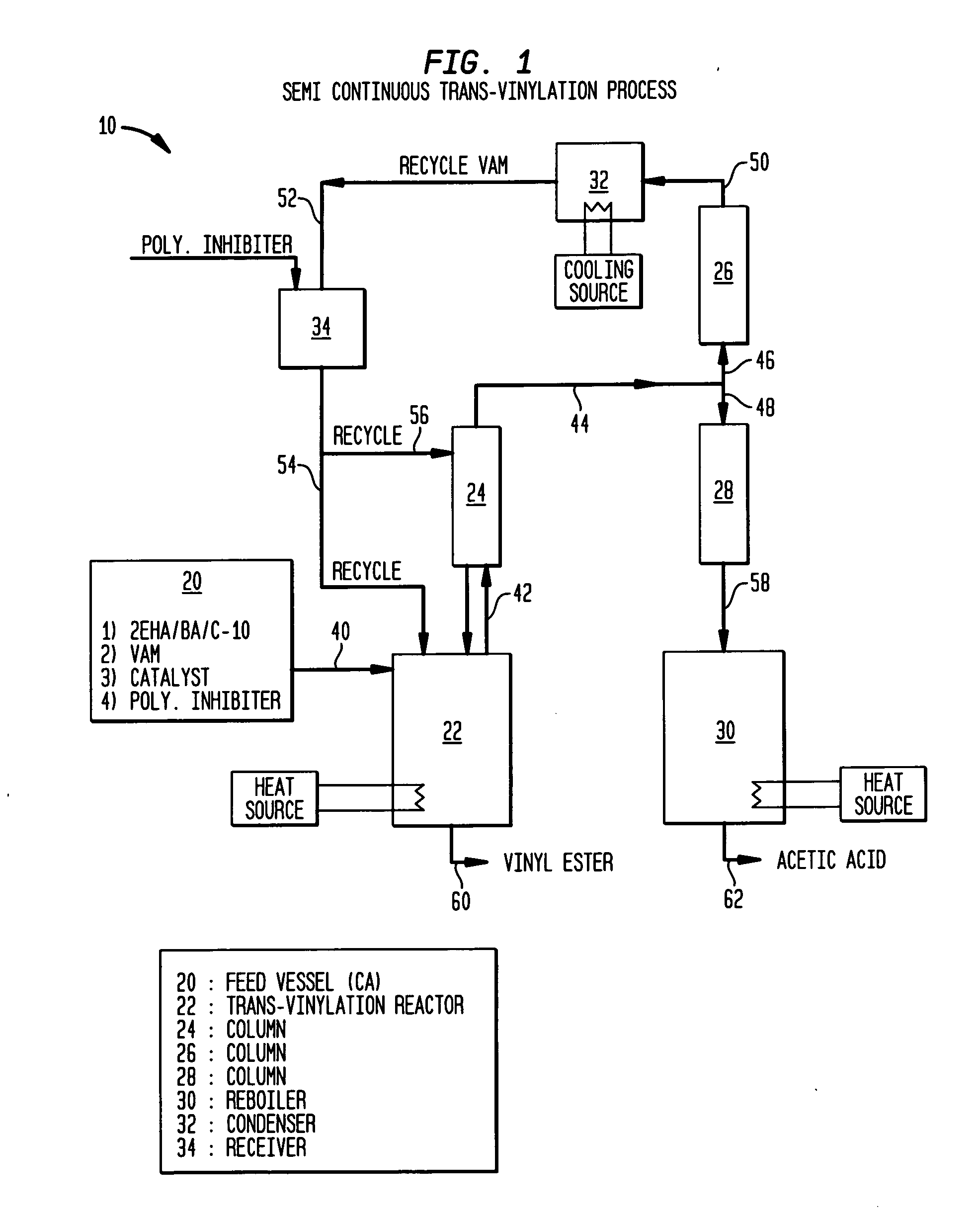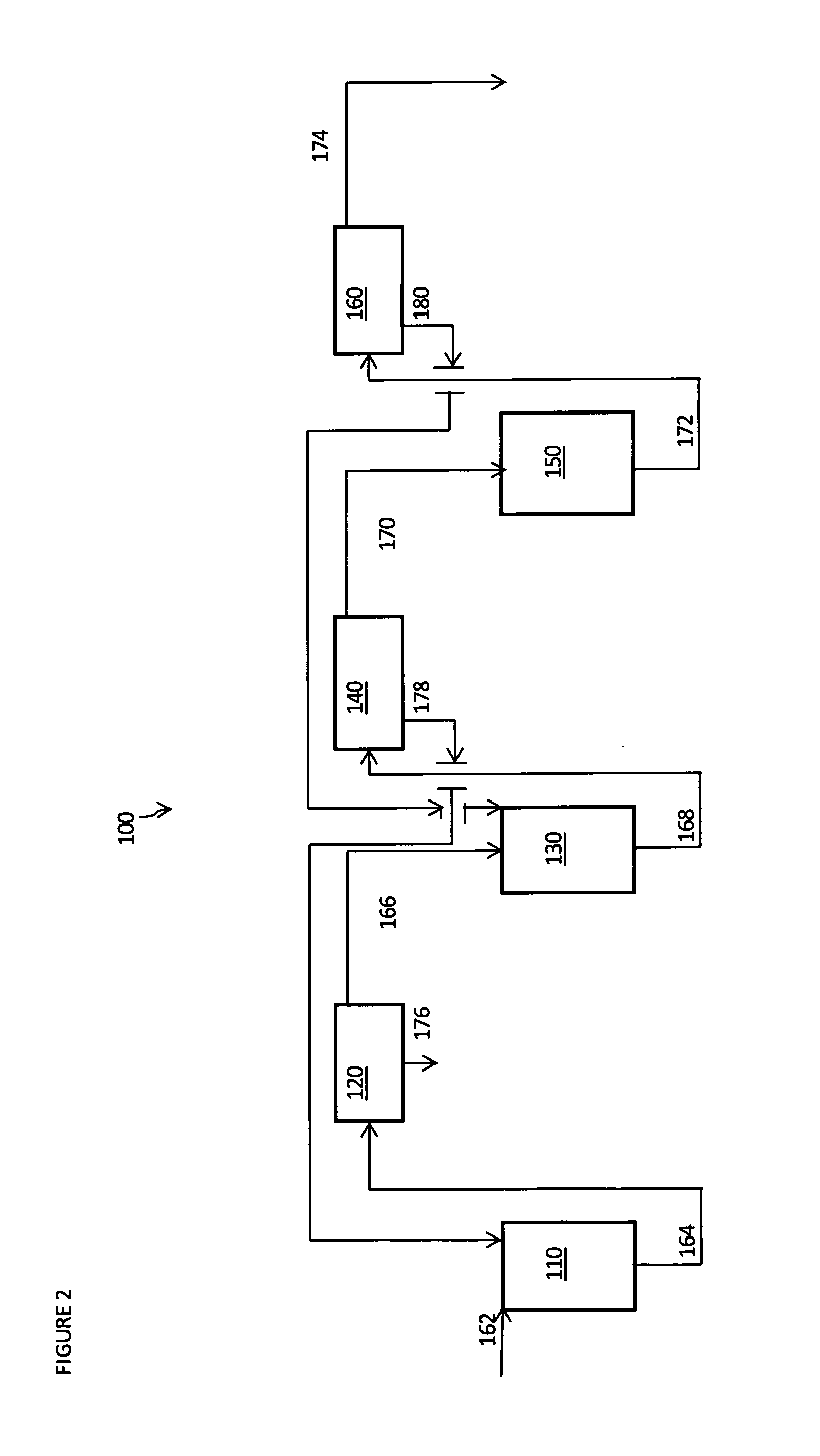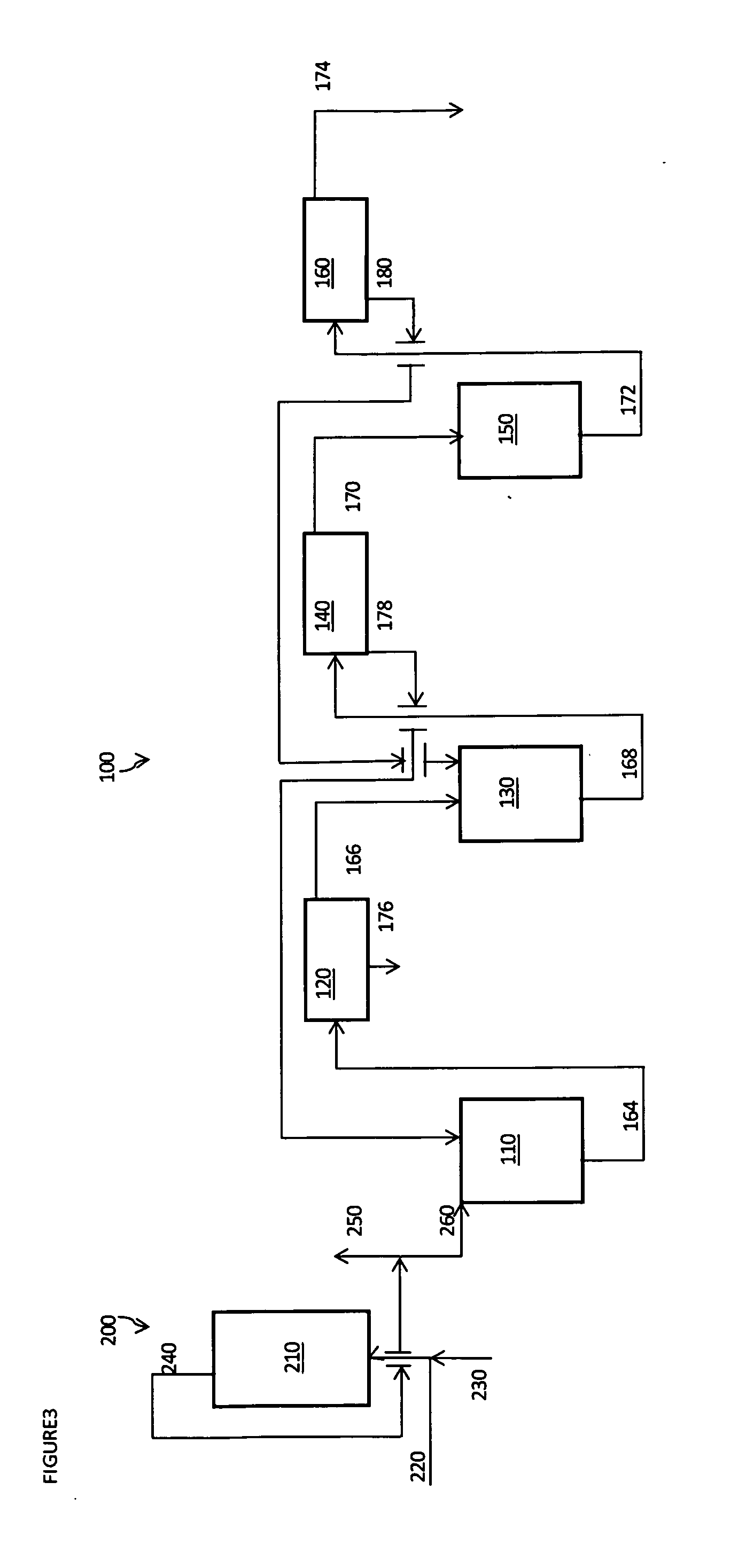Process for the semi-continuous transvinylation of carboxylic acids with vinyl acetate
- Summary
- Abstract
- Description
- Claims
- Application Information
AI Technical Summary
Benefits of technology
Problems solved by technology
Method used
Image
Examples
examples 1 & 2
Scale-Up Study & Pilot Runs for V-2-EH & VB
[0055]The catalyst life and recycle number information generated in lab scale experiments, discussed in further detail below, was used to design an experiment to test catalyst life, to identify a highest achievable turn over number (TON), and to study product purification and isolation. The scale-up was carried out using a semi-continuous reaction approach.
Description of Apparatus
[0056]Transvinylation was performed using a semi-continuous apparatus of the class shown in FIG. 1. The reaction system 10 mainly comprised a feed vessel 20; a stirred reactor 22 provided with a small packed column 24; a second packed column, comprising an upper rectification section 26 and a lower stripping section 28, configured to receive vaporized components from the reactor 22; a stirred reboiler 30; a condenser 32; and a distillate receiver 34. The temperatures of the reactor 22, distillation column 26, 28, reboiler 30 and condenser 32 were controlled by conv...
example 3
Catalyst Preparation
[0081]Catalyst was prepared using palladium acetate and a bidentate ligand such as 2,2′-bipyridyl. This catalyst was prepared generally using toluene as the solvent. Palladium (II) acetate was heated in toluene to 80° C. A solution of 2,2′-bipyridyl in toluene was added over a one hour period. The reaction was continued for two to four hours and then the catalyst reaction mixture was cooled. A catalyst complex, having a mole ratio of palladium (II) acetate to 2,2′-bipyridyl of from about 1:1.1 to 1:1.4, precipitated as a solid. The precipitate was filtered, washed with toluene, and dried under reduced pressure prior to use.
[0082]Another catalyst was prepared using a different bidentate ligand such as 1,10-Phenanthroline. The solubility of 1,10-Phenanthroline is negligible in toluene even at high temperature. Hence instead of toluene, acetonitrile, a very polar solvent, was used for preparation of the catalyst complex. Alternative solvents that may be used for pre...
examples 4-7
Effect on Transvinylation Reaction Using Catalyst Prepared with Bi-Dentate Ligand
[0085]A catalyst was prepared by using 1,10-phenanthroline as bi-dentate ligand. The catalyst prepared was a diacetato-palladium (II)-1,10-phenanthroline complex. The catalyst was isolated in solid form, dried and used in the reaction.
[0086]A V-2-EH run was performed with a palladium concentration of 626 ppm based on the mass of 2-EHA in a batch system. After six hours running at 100° C., the conversion achieved was 84.26%. A VB run was also performed with a palladium concentration of 626 ppm based on the mass of BA in a batch system. After six hours running at 100° C., the conversion achieved was 75.56 wt %. In both runs, vinyl acetate was provided in a molar vinyl acetate:carboxylic acid ratio of 4:1. The catalyst performance for each run was at par with the catalyst prepared by using a bi-dentate bipyridyl ligand.
TABLE 3Ligand effect on transvinylation.Example No.4567LigandBis-Bis-1,10-1,10-pyridylpy...
PUM
| Property | Measurement | Unit |
|---|---|---|
| Weight | aaaaa | aaaaa |
| Weight | aaaaa | aaaaa |
| Time | aaaaa | aaaaa |
Abstract
Description
Claims
Application Information
 Login to View More
Login to View More - R&D
- Intellectual Property
- Life Sciences
- Materials
- Tech Scout
- Unparalleled Data Quality
- Higher Quality Content
- 60% Fewer Hallucinations
Browse by: Latest US Patents, China's latest patents, Technical Efficacy Thesaurus, Application Domain, Technology Topic, Popular Technical Reports.
© 2025 PatSnap. All rights reserved.Legal|Privacy policy|Modern Slavery Act Transparency Statement|Sitemap|About US| Contact US: help@patsnap.com



